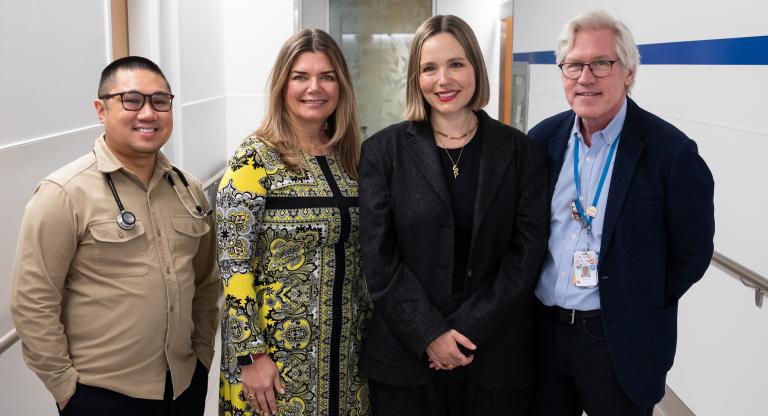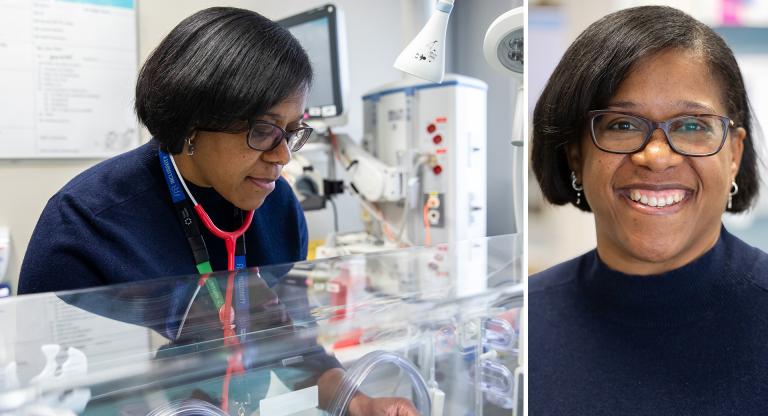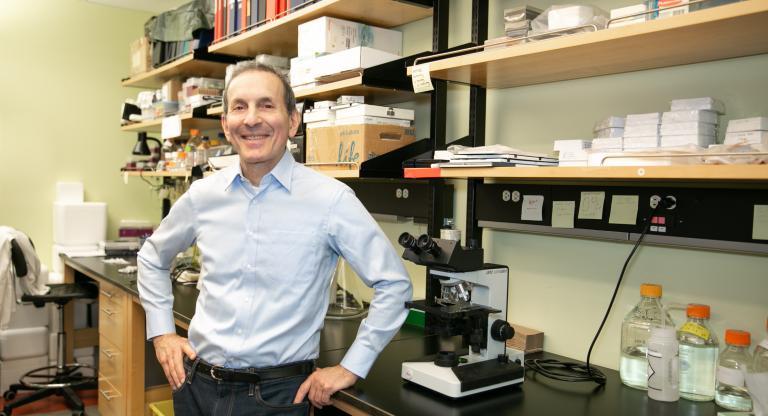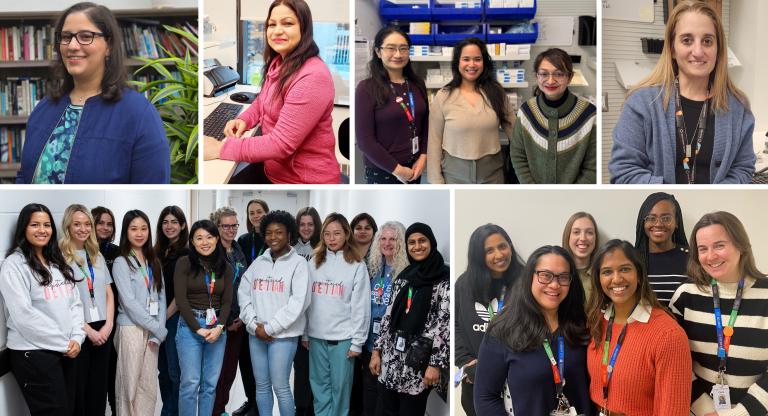In-utero surgery saves twins sharing one placenta
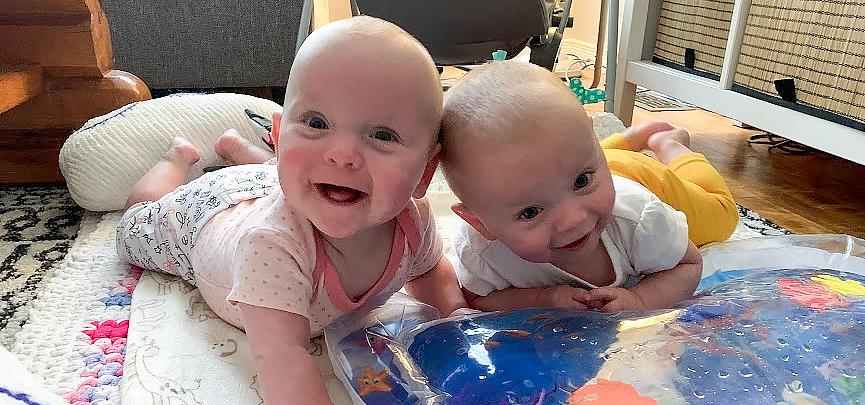
Kathryn and her husband Eddy were overjoyed when they found out they were expecting twins.
Things quickly took a turn at a routine ultrasound appointment, when Kathryn noticed the ultrasound technician was suspiciously quiet. Her intuition was telling her something was off, and she wasn’t wrong.
At 24 weeks gestation, they received the diagnosis that their unborn identical twins had a condition called twin-to-twin transfusion syndrome (TTTS). In cases of TTTS, disruption in the balanced flow of blood through a shared placenta can cause one twin (“recipient”) to receive too much blood, and the other (“donor”) to receive too little.
“Most times, placental blood exchange between twins is balanced. When one fetus receives excess blood through the placenta, it can cause high blood pressure,” explains Dr. Tim Van Mieghem, maternal-fetal medicine specialist at Mount Sinai Hospital. “This excess blood volume can put a strain on the baby’s heart.”
Kathryn was told that the twin receiving an excess of blood was showing signs of cardiac dysfunction.
“The doctor was explaining it to me and I was taking in the facts, but I froze up,” recalls Kathryn. “It’s a balancing act of letting yourself get upset, feel worried and staying strong, so you’re not throwing your body into further stress.”
She was walked through the options, including meeting with a world-leading team specializing in TTTS at the Ontario Fetal Centre (OFC) – a joint partnership between Mount Sinai Hospital and The Hospital for Sick Children (SickKids). Kathryn and her husband would need to immediately travel from Ottawa to Toronto. In a last minute shuffle to re-organize their lives, Kathryn explained to her boss that she would need “just a few short days” off work. They left their dog with family, and drove off to Toronto.
The Procedure
Fetoscopic laser ablation surgery is the current treatment option for TTTS. This minimally invasive procedure is done in-utero, with an 80 to 90 per cent chance of at least one fetus surviving and a 60 per cent chance of both babies surviving.
At Mount Sinai Hospital, Kathryn and Eddy met with the care team, led by Dr. Van Mieghem, and were counseled on the procedure. Despite a small chance of associated risks to both mother and fetus, this procedure is still for many considered to be the best option. For Kathryn, this was also the case, given that both twins were at high risk of sustaining severe disabilities.
The OFC is one of only four centres in Canada to offer this procedure. Since 1998, over 900 fetoscopic laser ablation procedures have taken place at Mount Sinai. It is one of the largest centres worldwide in terms of volume, averaging 65 procedures annually.
The Centre is also part of a collaborative network of fetal therapy clinics across North America that gathers data to build upon existing expertise and further research in the treatment of TTTS.
“Treatment has progressed significantly over the past decade,” says Dr. Van Mieghem. “We now use a newer method of treatment called the Solomon technique during the procedure, which research has shown can reduce prenatal postoperative complications.”
Optimistic Outcomes

Shortly after meeting with the OFC team, Kathryn went into surgery. It proved successful in balancing amniotic fluids in the donor twin and improving heart function in the recipient twin. However, an ultrasound the next day revealed that one of the twins was showing signs of a small brain hemorrhage.
Kathryn recalls her mind was racing when she found out the news, but she found solace in one simple mantra. In her mind, she repeated silently to her babies, ‘let your hearts heal and your brains protect you’.
A series of follow up appointments and a fetal MRI at SickKids over the next few weeks revealed what the family had hoped for. Both twins were showing significant improvement.
“Our faces lit up,” recalls Kathryn. “So much is thrown in the air and you just have to make sense of what it is and hope for the best.”
Through it all, Kathryn says she is grateful for the compassionate and professional care they received.
“I'm not sure I'll ever be able to express the extent of my gratitude,” says Kathryn. “I've caught myself tearing up more than once, looking into our kids’ faces and thinking about how far they've come.”
Today, twins Avery and Sloan are nearing their first birthday and are both thriving in every sense of the word.









